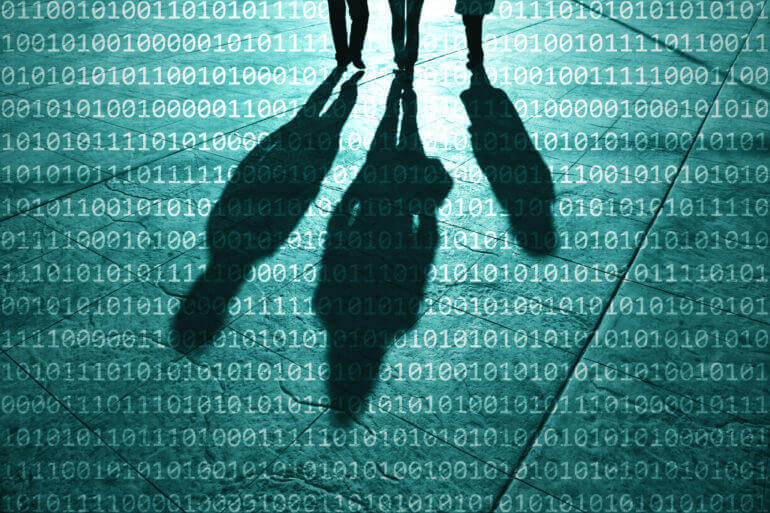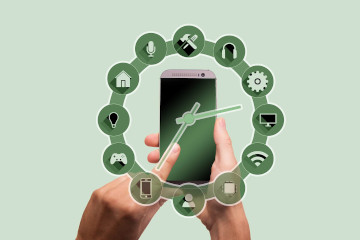

How Artificial Intelligence will Affect the Physical Security Industry
Artificial Intelligence, or Machine Learning as it is commonly referred to these days, is one of the hottest technologies that is changing the world today. It has been identified as an Exponential Technology by Salim Ismail of Singularity University which means it is a technology for which performance relative to cost and size is doubling every one to two years.
This incredible level of growth has got me thinking how it will affect Workforce Management systems like Guard Tour Systems as well as the physical security industry as a whole. Join me on a little journey into the near future to speculate just what we could be seeing.
Understanding what we say with Natural Language Processing
In fact, machine learning is already integrated into most smartphone security apps today. I say this because most support speech to text. Without machine learning, you would need to type everything into the phone rather than just speaking.
That’s great but I believe it will see a whole lot more. I predict that systems will go much further with natural language processing and start to understand what has been entered rather than just reporting it. This is really important for smart tagging incidents. It’s obvious to us humans that a sentence like “Spray paint was found on the back wall” means that vandalism occurred. A machine does not see it that way.
I think we will get systems that have better topic identification. These systems will be able to understand the that the report was about vandalism despite it not being explicitly mentioned in the sentence. They will be able to classify incidents correctly without any human help and tag them. This will allow advanced analytics to give a better understand of what incidents are most common on a particular property and need the most attention.
Helping others understand with Automated Translation
Another large area for natural language processing is automated language translation. The reality is that your clients and security officers may speak different languages. We have many clients who employ a mix of English and Spanish native speakers. Their clients may want reports in either language or even some totally different language. Today, there is a limited ability for machines to automatically translate languages but it’s not perfect.
I predict that we will see systems where your customer gets his or her daily activity report accurately translated into their native language, no matter what language the officers entered data in.
Understanding what we see with Computer Vision
Video processing and computer vision is a huge area of interest for the physical security industry. Already there are many systems that use facial recognition. We also see more niche areas such as automated license plate recognition.
I think that this will continue to improve so that an officer snapping a picture will capture a whole lot more useful, searchable information. Let’s just think of one simple example, an officer working on parking citations. Let’s say he simply points his smartphone at each vehicle. The phone uses license plate recognition and tells him useful information. For example the number of previous citations the vehicle has and outstanding payments. If he decides to cite the vehicle, the phone uses computer vision to recognize the make, model and color of the car. These are automatically added to the citation together with the license plate information. This would save a lot of time and effort.
Ensuring everything is working well with Anomaly Detection
Today, human supervisors are mostly required to make sure an officer is on post and doing his job. Sure, we can get simple alerts for when someone has not checked in or maybe hasn’t moved in a while but it still requires a human to evaluate and assess the situation.
Another prediction I would like to make is that machines will get a lot better at learning just what is “normal” in any particular situation and give smarter alerts. For example, a machine could monitor the order in which checkpoints are done. It could also look at the normal time between those checkpoints. If it did not observe the correct pattern, it could notify a person to investigate. This could take into account the fact that certain properties want their checkpoints in order while others specifically want them out of order. A decision they make to make it harder for bad actors to understand officer movements.
This area of machine learning is called anomaly detection. I can see how it will make supervisors jobs a lot easier in the future. They will only need to deal with exceptions rather than constantly monitoring usual behavior. Further, the system could learn what are important alarms and what are less important. It could then prioritize them so that the most important are dealt with first.
Better situational awareness with Human Activity Recognition
Increasingly, I think we will see the convergence of monitoring systems such as alarm and video surveillance and workforce management systems like guard tour systems. This will lead to better command centers. Using the command center, officers will get better situational awareness and the ability to be guided to do their jobs more efficiently.
The challenge here is to use artificial intelligence to interpret the data from sensors and use it to modify jobs required of human security officers. In order to do this, the system needs an understanding of just what activities the sensors are actually observing. This is an area called human activity recognition. This might be using data from simple sensors like alarms but might also include using much more advanced sensors. For example it could include a sensor that feels vibrations on a fence and and one that uses seismic footstep detection. Alarms from both of these could be used to infer that a security breach has occurred. The difference here from simple sensors, like basic alarm systems, is that the machine is context aware. It understands that footsteps are normally not a reason to worry but they may be at certain times and after vibrations have been found on the fence.
Once a system using this kind of intelligent threat detection understands that it is seeing some activity that needs intervention, say a theft in progress, it could reroute humans to intervene.
Getting to difficult places with Drones and Robots
Already we see a large number of drone based systems and a few robots are appearing. While these do not replace human security officers, they can augment them to get to difficult places and multiply the usefulness of each officer.
The trend seems to be for these devices to get more and more clever and autonomous. I think we are going to see devices that can work better on their own with only minimal human guidance. Of course for this to happen, it will probably need advances in a lot of the areas I have mentioned above from computer vision to anomaly detection. It would also fit nicely with a core command center that is empowered with good human activity recognition capabilities. An alert fired could be used to send the right resources for the circumstance whether it’s a human, a drone or a robot.
Artificial Intelligence’s Ultimate Affect
I’ve quickly touched on just a few areas where machine learning could have a large impact on the physical security industry. Of course, I don’t have a crystal ball and I can’t tell what will happen in the future but, historically, many predictions have totally underestimated the effect of exponential technologies. It’s quite likely that things may change even more than I have imagined.
I am sure there are going to be some people who are threatened by these technologies and feel that they will take away jobs. I see them more as empowering tools. This will allow today’s workforce will be more productive. This value add will ultimately lead to greater profits for security companies.
New Kugadi Posts

The hidden challenges of remotely managing operations and why smart automated security technology is so important in mitigating risks.

By using a data-driven approach, companies have a holistic view of how areas perform and can find repeat problem areas to take action. They can better understand if more lighting is needed, extra guards, etc.

Looking at the data you collect greatly helps you run your security guard company